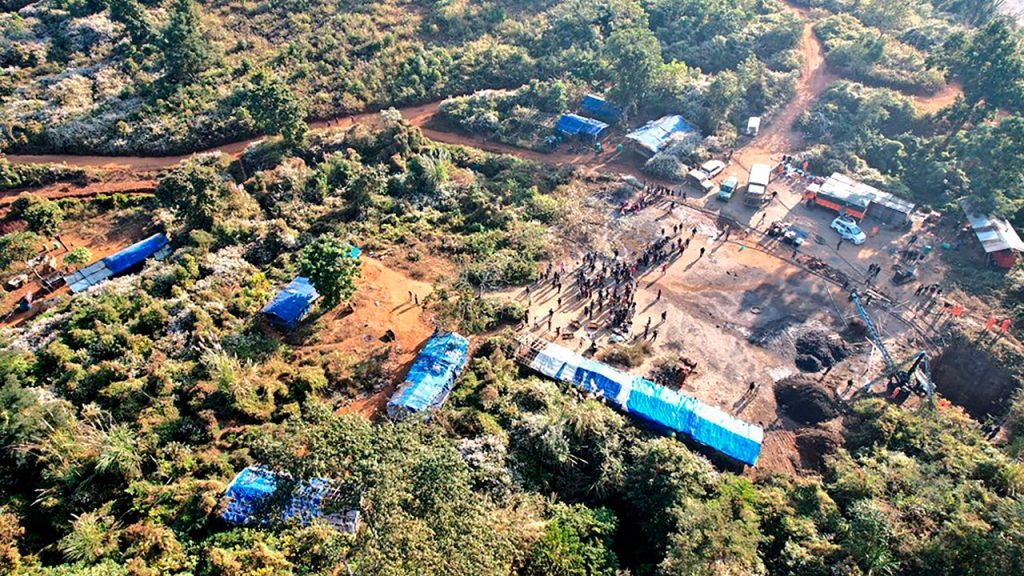The incident at the Umrangso coal mine in Dima Hasao district, Assam, underscores the precarious nature of illegal mining operations and the human cost associated with them. Nine or more miners became entrapped approximately 300 feet underground when water surged into the active mine from a neighboring abandoned one. This sudden inundation, occurring on Monday morning, triggered a frantic rescue operation involving the army, a national disaster management team, and local authorities. Minister Kaushik Rai, overseeing the rescue efforts, confirmed the retrieval of three helmets, slippers, and other belongings, indicating the miners’ presence. Despite divers reaching depths of 35-40 feet, the escalating water level, estimated at 100 feet, severely hampered rescue attempts.
The illegal nature of the mine has come into sharp focus, with Assam Chief Minister Himanta Biswa Sarma confirming the arrest of one individual in connection with the incident. This revelation highlights the pervasive issue of unregulated mining activities in the region, often characterized by minimal safety protocols and a disregard for workers’ well-being. Workers at the site claimed that over a dozen miners were initially trapped, with some managing to escape the rising waters. This discrepancy in the number of trapped miners adds to the complexity of the situation and underscores the lack of accurate record-keeping often associated with such clandestine operations.
The incident echoes a pattern of similar tragedies in India’s eastern and northeastern regions, where “rat-hole” mines, narrow and hazardous pits typically accommodating a single miner, proliferate. These mines, prevalent in hilly terrains, involve rudimentary extraction methods, with coal hauled to the surface using pulleys and baskets. The dangers inherent in these practices are compounded by the lack of safety measures, making accidents a recurrent feature. The 2019 Meghalaya mine disaster, which claimed the lives of at least 15 miners, serves as a stark reminder of the risks involved.
The tragedy at the Umrangso mine brings into sharp relief the complex interplay of factors contributing to such incidents. The pursuit of livelihood through illegal mining activities, driven by poverty and lack of alternative employment opportunities, often outweighs the inherent risks. The demand for coal fuels this precarious industry, where workers toil in dangerous conditions for meager wages. The absence of effective regulation and oversight further exacerbates the problem, allowing illegal mines to operate with impunity.
The ongoing rescue operation at the Umrangso mine faces significant challenges. The rising water levels, the depth of the mine, and the narrow access points present formidable obstacles to rescuers. The precarious conditions within the mine, coupled with the lack of accurate information regarding the number and location of trapped miners, complicate the rescue efforts. The use of ropes, cranes, and divers highlights the desperate attempts to reach the trapped miners, but the chances of survival diminish with each passing hour.
The incident serves as a wake-up call for stricter enforcement of mining regulations and a comprehensive approach to address the root causes of illegal mining. The focus should shift from reactive rescue operations to proactive preventative measures that prioritize worker safety and environmental protection. This requires a concerted effort from government agencies, mining companies, and local communities to create sustainable livelihood alternatives and discourage the proliferation of illegal mining practices. The tragedy at Umrangso must be a catalyst for change, ensuring that such incidents are not repeated.

